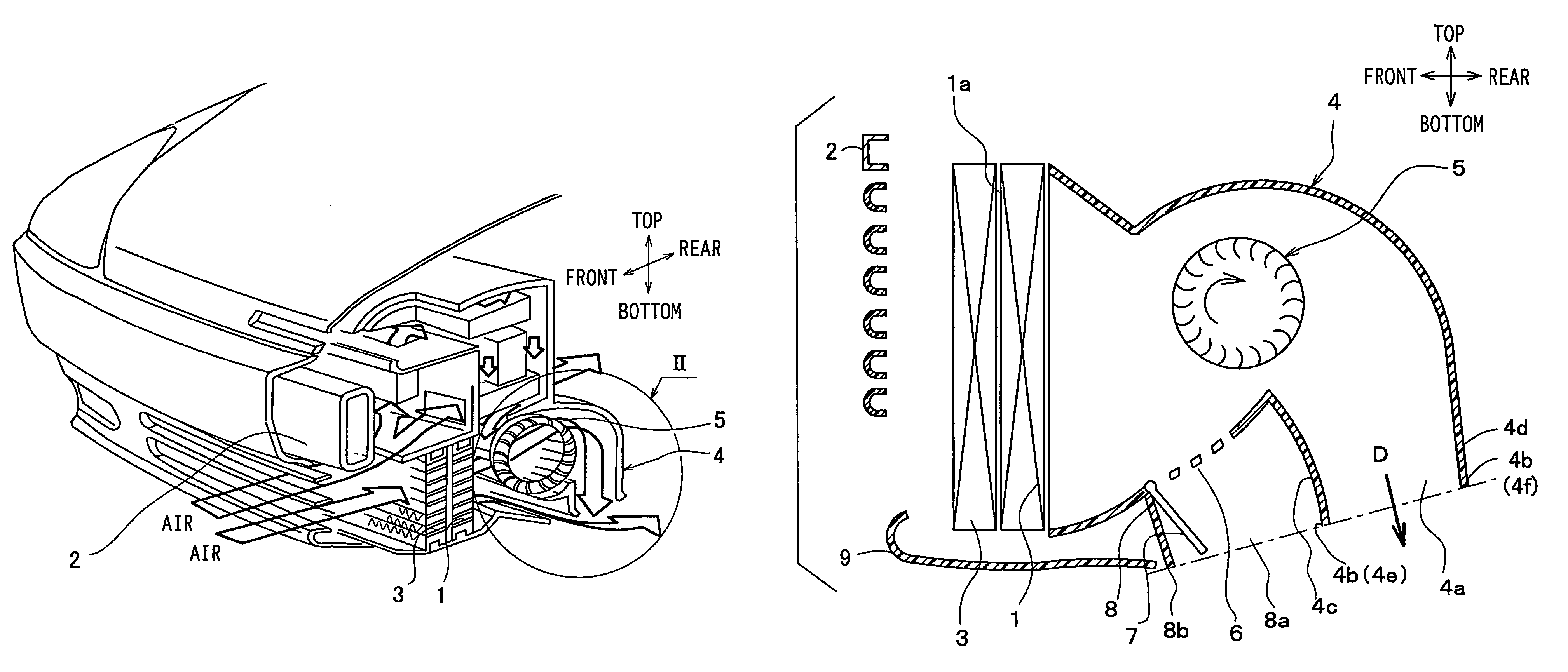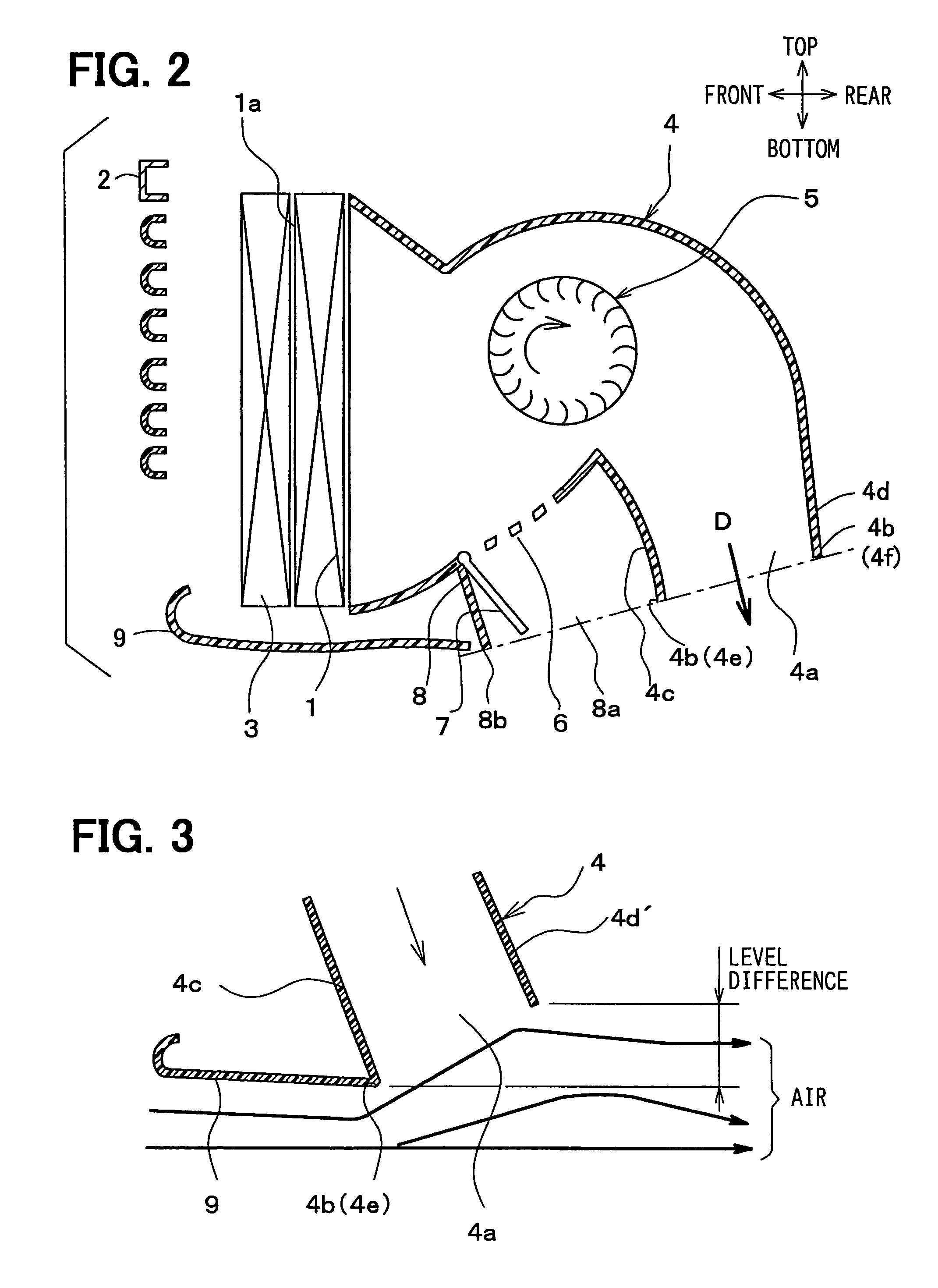Cooling system for vehicle
a technology for cooling systems and vehicles, applied in vehicle components, superstructure sub-units, propulsion parts, etc., can solve problems such as difficulty in improving the heat radiation capacity of radiators, and achieve the effect of reducing the air pressure in the ventilation du
- Summary
- Abstract
- Description
- Claims
- Application Information
AI Technical Summary
Benefits of technology
Problems solved by technology
Method used
Image
Examples
first embodiment
[0016]The first embodiment of the present invention will be now described with reference to FIGS. 1-3.
[0017]In FIG. 1, a radiator 1 is a heat exchanger for radiating heat, which cools engine-cooling water by exchanging heat between the outside air and the engine-cooling water which has cooled an engine (an internal-combustion engine). The engine is used in a vehicle as a driving source for traveling.
[0018]In this embodiment, among the external size of the radiator 1, a dimension parallel to a vehicle width is made larger than a dimension parallel to a vehicle height direction. Therefore, the height dimension of the radiator 1 is shortened to make the radiator 1 flat while a sufficient heat radiation capacity of the radiator 1 is maintained. Then, the radiator 1 is disposed in the vehicle, such that the whole radiator 1 is positioned lower than a bumper reinforcement member 2 when viewed from a vehicle front.
[0019]The bumper reinforcement member 2 lies in a vehicle front end portion ...
second embodiment
[0045]In this embodiment, an axis-flow fan (referring to JIS B 0132 No.1012) is used as the blower 5, where air passes through the fan in its axis direction. In the second embodiment, the other parts are similar to those of the above-described first embodiment.
Other Embodiments
[0046]Although the present invention has been fully described in connection with the preferred embodiments thereof with reference to the accompanying drawings, it is to be noted that various changes and modifications will become apparent to those skilled in the art.
[0047]For example, each of the outlet 4a and the outlet 8a can also be constructed with an upward or sideward opening, without being limited to the above-described embodiments where each of the outlet 4a and the outlet 8 is constructed with a downward opening.
[0048]In the above-described embodiments, a heat-exchange core surface 1a of the radiator 1 is arranged in the vehicle nearly parallel to the vertical direction. However, the present invention ...
PUM
 Login to View More
Login to View More Abstract
Description
Claims
Application Information
 Login to View More
Login to View More - R&D
- Intellectual Property
- Life Sciences
- Materials
- Tech Scout
- Unparalleled Data Quality
- Higher Quality Content
- 60% Fewer Hallucinations
Browse by: Latest US Patents, China's latest patents, Technical Efficacy Thesaurus, Application Domain, Technology Topic, Popular Technical Reports.
© 2025 PatSnap. All rights reserved.Legal|Privacy policy|Modern Slavery Act Transparency Statement|Sitemap|About US| Contact US: help@patsnap.com



